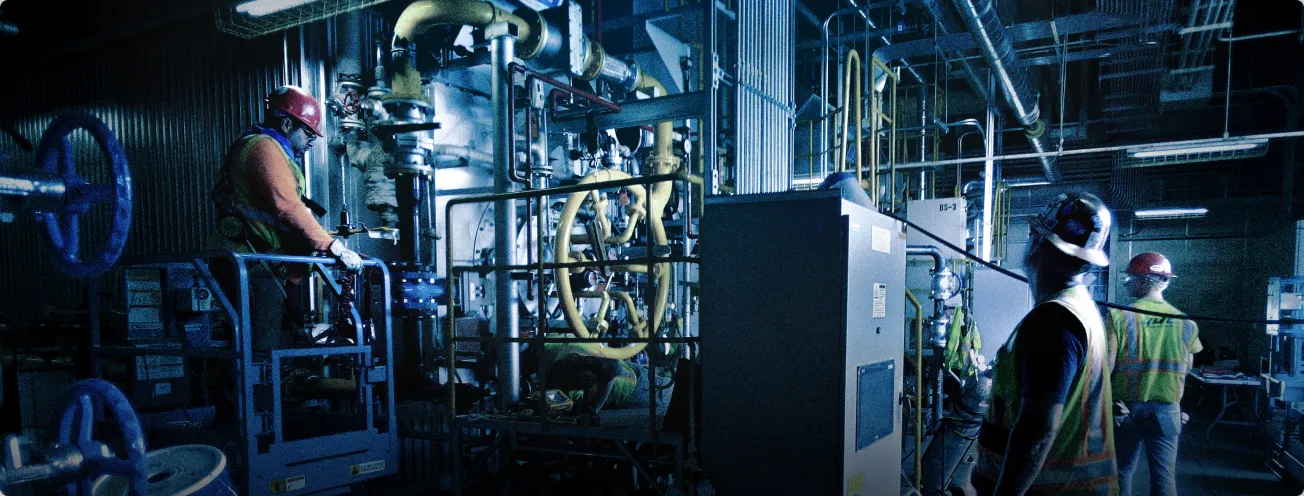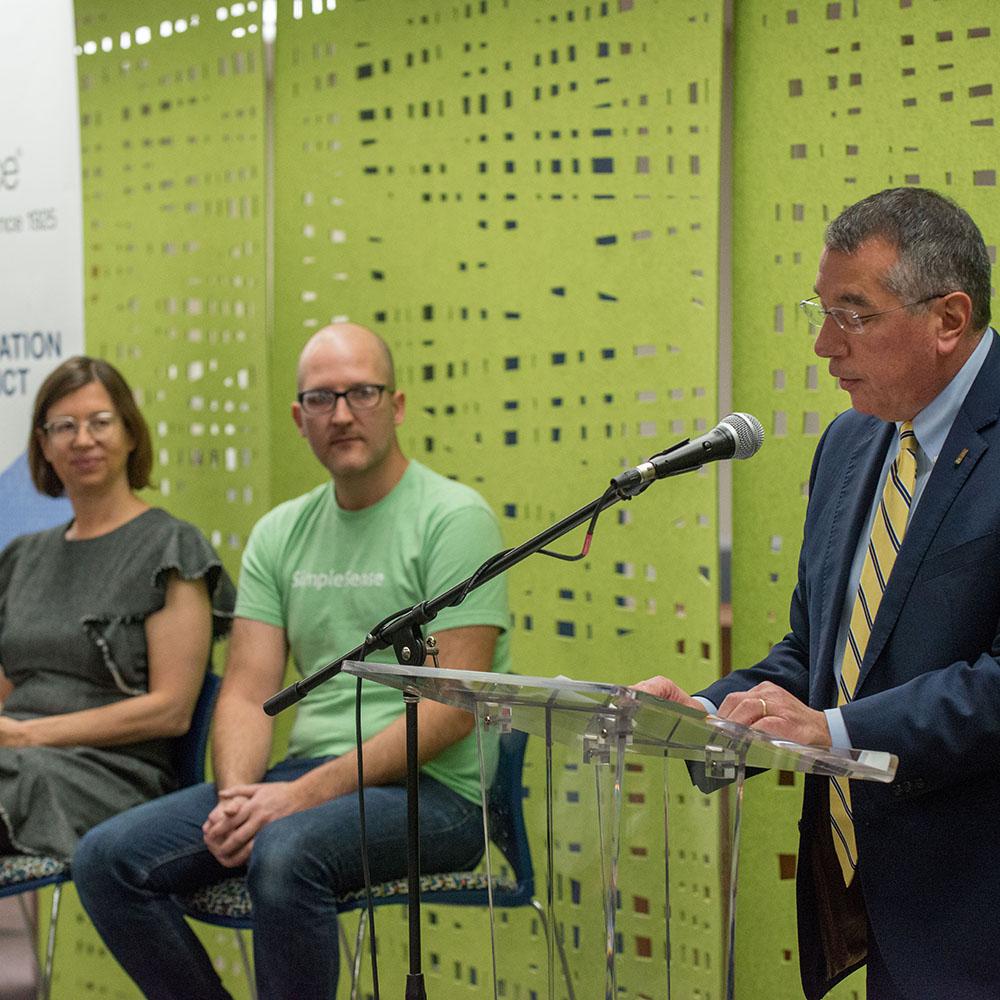How Decentralizing Access to Information will Reduce Response Times
According to the National Emergency Number Association (NENA), more than 80% of 9-1-1 calls are from wireless devices. While there is critical information that emergency personnel can glean from cell phone and VoIP calls, these new methods of contacting 9-1-1 has created a tidal wave of data for dispatchers to parse, with no more time to do so.When someone is in crisis, every second counts; having too much data is just as dangerous as too little...

Drowning in Data
According to the National Emergency Number Association (NENA), more than 80% of 9-1-1 calls are from wireless devices. While there is critical information that emergency personnel can glean from cell phone and VoIP calls, these new methods of contacting 9-1-1 has created a tidal wave of data for dispatchers to parse, with no more time to do so.When someone is in crisis, every second counts; having too much data is just as dangerous as too little. Depending on the state in which a person dials 9-1-1, there are dozens, hundreds, and sometimes thousands of different emergency classifications.Meaning, on top of probing for necessary information, call-takers and dispatchers (which sometimes are the same person, other times two people in different physical locations) need to gather an extensive amount of information about the emergency itself and communicate that information to the appropriate parties within seconds (e.g., fire department, police department, and emergency medical services).In the case of emergencies, there is always an element of reactivity. But by building a system that decentralizes and shares information with the first responders who need it securely, automatically, and immediately, dispatchers and first responders can better react in real time.Here’s a list of information that today’s dispatchers potentially have at their fingertips and are supposed to filter through and disseminate to everyone responding to an emergency:
- Survey-question answers from 911 caller
- Surrounding critical infrastructure (e.g., fire hydrants)
- Building pre-plans: layouts, fire detection, sprinkler, shut-offs
- Potential hazards (e.g., oxygen tanks, explosive chemicals)
- Occupants with disabilities
- Location emergency contact
- Registered pets
- Social media: texts, videos, and photos
Between low pay and high stress, the job of 9-1-1 call takers and dispatchers is already crushingly difficult, let alone getting swamped with extraneous—and at times—incongruous data. But what if all this data could streamline their position, minimize the hardships and anxiety of emergency services, and ultimately, help them save more lives?
Dispatchers can feel like they are drinking from a fire hose. Although there is a wealth of data available, it can become distracting.
President of Engineering at InterTalk Critical Information Systems, Larry Hicks, captures this problem perfectly during his keynote speech at the 2019 International Wireless Communication Expo (IWCE) when he said, “dispatchers can feel like they are drinking from a fire hose. Although there is a wealth of data available, it can become distracting.”
Why outdated?
When we use the word outdated, we’re talking about the centralized design of the 911 system. In the 1960s, when AT&T and the federal government created the 911 system, Paul Baran, a researcher at RAND, proposed a new kind of network, where no one node was critical to the success of the overall entity.

Baran, Paul. On Distributed Communications (1964)At the time, the idea was revolutionary, and unfeasible. Baran was working with satellite dishes and copper wires, trying to figure out how to survive a nuclear attack.Today, his ideas are the foundation of the internet, where data flows through many hubs, with data packet containing its own instructions of where it’s headed and where it’s from. Evolving technology like blockchain has the potential for creating truly distributed networks, with no hubs or gatekeepers like Internet Service Providers controlling the flow of traffic.The modern 911 system is a series of central hubs, tenuously connected by voice over radio or telephone. For example, in a major incident, multiple public agencies may respond, including city, county, state, and federal; a large corporate or university campus has their own response system, some with volunteer medics, paid firefighters, and armed security. Each agency operates its own security center, with their own dispatch and communication links, typically radio on their own frequency.
“Back as far as the ‘70’s, we’d chase bank-robbers through 10 or 15 jurisdictions, with 20 or 30 pursuers on 20 different frequencies. LAPD had 13 or 14 frequencies of their own.”
John Abbey, Retired Police Chief
These weak links lead to miscommunication, delay, and ultimately, we as a society pay the price in terms of higher property damage, longer-term health recovery and disability, and higher mortality rates.
Washington Navy Yard Shooting
In our view, the 2013 Shooting At The Washington Navy Yard is a case study in the shortcomings of a response structure where information is centralized. By studying examples like this, we can uncover where communication breakdowns occur, and learn from the history of emergency services.In this incident, first responders from the Metropolitan Police Department (MPD), U.S. Park Police, Naval District of Washington (NPW) Police, Naval Criminal Investigative Service (NCIS), Metropolitan Washington Airports Authority, U.S. Marshals Service (USMS), Navy Contract Security Guards, and the U.S. Navy, Department of Defense (DOD) as well as 9-1-1 call takers and dispatchers saved dozens of lives because of their exceptional emergency service, using the best available training and tools.The question is: can we improve the system itself to help first responders in this terrible situation?On the morning of September 16, 2013, Aaron Alexis entered Building 197 at the Washington Navy Yard and preceded to shoot and kill 12 people. But as hundreds of police, fire, and emergency medical personnel responded to the Washington Navy Yard emergency call, their lack of access to critical information allowed Alexis to continue his rampage for 69 minutes before officers were able to neutralize the threat. Between 8:16 AM and 9:25 AM, over four floors of a building, up and down hallways, and through corridors, he carried out one of the most deadly workplaces attacked in Washington D.C.’s history.

In the full MPD After Action Report, there were 76 recommended changes to the emergency process that evolved from a myriad of observations about how the police handle the active-shooter emergency. We’ve highlighted the most notable recommendations that decentralized data could resolve.
Multiple Call Centers
Two separate emergency call centers received hundreds of calls during the incident. The Navy Yard’s internal emergency number routed calls to the Naval District of Washington (NDW) communications center and the 9-1-1 system routed calls to the city’s emergency call center at the Office of Unified Communications.Securely sharing data between call centers and first responders can eliminate the delay in communication that occurs when radio is the primary mode of communication, especially during complex, rapidly-evolving events.
Entry Issues
When emergency personnel arrived at the base’s gate, they were unable to gain entry for four minutes. Sharing physical access codes directly with authorized responders equips them to unlock gates and doors.Agencies already collect this information in at least one database, the problem is that access to each database is centralized with one agency, and if you as the responder aren’t from that agency, the data is not accessible to you when you’re standing outside the gate.

Location Confusion
Arriving Metro Police officers did not know the location of Building 197, nor the closest entrance to get to 197. Eventually, police located the building by noticing a surge of people evacuating the structure. When MPD finally arrived at Building 197, individuals at the scene informed them that officers were already in the building and were searching for the shooter.Furthermore, despite agencies’ requests, few responding emergency personnel received access to floor plans during the incident. For this reason, agencies have to agree on how to authorize, share, and access critical information like floor plans, maps, and camera locations. However, there is currently no standard for doing so.With this shared, decentralized approach to emergency information, agencies can have a standardized method of sharing and accessing information directly from their mobile devices. The hard part is agreeing on how to share: the Internet, smartphones, and robust cell networks like FirstNet make accessing shared data relatively simple.
Trouble with Radio Communication
Some agencies' radios would not work inside the building due to its construction, and the volume of radio traffic interfered with some officers' ability to communicate vital information. As we talked about in part one of this series, you'll know we've noted some significant concerns about the current architecture of emergency services.Radio communications quickly become congested during complex, rapid-evolving events. Decentralized, Internet-based architecture circumvents the "one-point-of-failure"inherent in radio. This issue is especially pressing in areas where reception is spotty, or multiple calls regarded the same emergency clog the channel.
No Security Camera Access
Responding law enforcement did not receive timely access to the CCTV cameras in and around Building 197. This limited access to video footage contributed to difficulties during the subsequent investigation.In the future, 9-1-1 could grant access to CCTV camera feeds through a decentralized IP-based architecture. This feed could also include the location of each camera to aid in real-time updates during rapidly-evolving events.
What’s the solution?
In our daily lives, we share critical, personal information frequently with services like Mint, Venmo, Robinhood, QuickBooks, etc. that access our bank account and credit card records. Essentially, multiple, independent agencies (financial firms) agree on how to share data, and then we authorize them to do so with the click of a button.

Why can’t public and private safety agencies do the same?
Coming Up
In our next post, we’ll attempt to quantify the actual cost of response time delays caused by the current centralized emergency response system.



